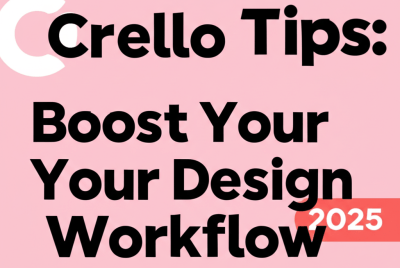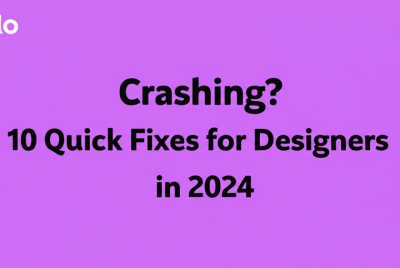Figma for Beginners: Master UI/UX Design Fast [2024]
Thinking about diving into UI/UX design but feeling a bit lost on where to start? You’re in the right place! Figma has quickly become a go-to tool for designers everywhere because it’s powerful, collaborative, and genuinely user-friendly. This guide for Figma for beginners is packed with everything you need to know to get designing quickly.
Here’s a quick overview of what we’ll cover:
- What is Figma? It’s a cloud-based design and prototyping tool that helps teams create and iterate on user interfaces in real time.
- Why learn it? Figma offers real-time collaboration, a massive plugin ecosystem, and a versatile skillset for web, mobile, and graphic design.
- How do I start? Simply create a free account, get to know the interface, and then jump into creating your first design with frames, shapes, and text.
- Essential features to know? Components, Auto Layout, Prototyping, and Plugins are game-changers for your workflow.
By the end, you’ll have a solid grasp of Figma’s core features and be ready to craft your first designs as a confident Figma for beginners user.
What is Figma for beginners and why is it a top choice for new designers?
Figma is a cloud-based design and prototyping tool that lets teams create, test, and refine user interfaces and experiences together, live and in real-time. Unlike older design software that needed tricky installations, Figma runs directly in your web browser. This means for Figma for beginners, there’s no complicated setup or expensive licenses just to start your design journey. It’s an all-in-one platform for everything from initial wireframes to polished mockups and interactive prototypes, offering excellent Figma basics for anyone new to design.
Why should graphic designers learn Figma in 2024?
The design world is always moving forward, and Figma is leading the charge with incredible benefits for individual designers and big teams alike. Learning Figma truly opens up a world of possibilities. Its real-time collaboration means multiple designers can work on the same file simultaneously, making workflows smoother and cutting down on communication headaches. Plus, Figma’s huge plugin ecosystem expands its abilities, helping you automate tasks and connect with other creative tools. Whether your passion is web design, mobile app design, or even general graphic design, mastering Figma gives you a versatile skill set that employers are actively looking for. Many new designers find Figma for beginners much easier to pick up than other complex design tools, making it an ideal starting point for UI/UX design. It empowers you to bring your creative ideas to life faster than ever before. If you’re curious about how it stacks up against other options, check out our comparison of Figma vs. Sketch, which shows why so many designers are making the switch to Figma for their design needs.
How can new users get started with Figma: Your very first steps?
Starting your journey to learn Figma is exciting! This section walks you through the initial setup and your very first interaction with the tool, ensuring a smooth beginning for all Figma for beginners.
How do I create a Figma account and get started?
Creating your Figma account is super straightforward: just head over to Figma’s website and sign up for a free account. You can use your Google account or any email address. Once registered, you’ll land on your dashboard, which serves as your central hub for all your design projects. This quick setup is another reason why Figma is fantastic for Figma beginners.
What are the core parts of the Figma interface for beginners?
The Figma interface might seem a bit busy at first glance, but it’s actually organized very logically. Let’s break down the essential Figma basics to help you navigate:
- Toolbar (Top): This is where you find crucial tools like Move, Scale, Frame, Shape tools, Pen, Text, Hand, and Comments.
- Layers Panel (Left Sidebar): Here you’ll see all the layers in your design, neatly organized. It’s where you manage objects, groups, and components.
- Assets Panel (Left Sidebar): This panel stores reusable components, which dramatically boosts your workflow efficiency.
- Pages Panel (Left Sidebar): Organize your designs into multiple pages within a single file—great for complex projects.
- Properties Panel (Right Sidebar): This panel is smart! It changes to show specific properties and options for whatever object you currently have selected, letting you adjust fills, strokes, effects, and export settings.
- Canvas (Center): This is your main workspace, where all the design magic happens.
Getting familiar with these areas is key for any Figma for beginners user. Take some time to click around and observe how different tools affect the properties panel. A solid understanding of these Figma basics will truly accelerate your learning curve.
How can I create my first UI design in Figma?
Now for the exciting part—creating something! This mini Figma tutorial will guide you through making a simple UI element. Just follow these steps to kickstart your journey in Figma UI design:
- Start a New File: From your dashboard, click the “+” button to open a new design file. This is where every Figma for beginners project begins.
- Add a Frame: Select the ‘Frame’ tool (you can press the F key). On the right sidebar, choose a preset like “iPhone 13” under “Phone” to set up your artboard. This acts as the canvas for your Figma UI design.
- Draw a Shape: Grab the ‘Rectangle’ tool (R key) and draw a rectangle inside your frame. This could be a simple button or a header.
- Add Text: Select the ‘Text’ tool (T key) and click on your rectangle to add some text, like “Sign Up.” Use the properties panel to easily change the font, size, and color.
- Adjust Colors: Select your rectangle. In the properties panel, under “Fill,” click the color swatch to pick a new color. Do the same for your text to make it pop.
- Group Elements: Select both the rectangle and the text, then right-click and choose “Group selection” (or Ctrl/Cmd + G). Now they’ll move together as one element!
This simple exercise shows you the core process of building elements in Figma. The more you practice, the more intuitive it becomes. For deeper insights and useful shortcuts, explore our Figma Tips guide, which expands on these essential Figma basics.
What essential Figma features should new users master for efficient workflow?
As you move beyond the absolute Figma basics, several key features will significantly improve your design workflow. This quick Figma guide highlights some must-know functionalities for any aspiring designer looking to learn Figma efficiently:
- Components: Think of these as reusable UI elements (like buttons, input fields, or navigation bars). When you change the “master” component, all its “instances” update automatically. This is fundamental for consistent Figma UI design.
- Auto Layout: This powerful feature lets you create dynamic frames and components that smartly adjust to content changes. It’s a lifesaver for responsive design and helps you really level up your Figma tutorial skills.
- Prototyping: Connect your frames and elements to build interactive prototypes. This allows you to simulate user flows and test the user experience before development, a crucial skill for anyone who wants to learn Figma for real-world projects.
- Plugins: Extend Figma’s capabilities with third-party plugins. From instant icon libraries to accessibility checkers, plugins automate tasks and add powerful features, making your journey as a Figma for beginners much smoother.
- Collaboration: Easily share your files with teammates, clients, or stakeholders. They can view, comment, or even edit in real time, making feedback loops incredibly efficient.
Grasping these features is key to truly unlocking Figma’s full potential. With a little practice, you’ll find even complex designs become manageable. And if you’re curious about how Figma stacks up against other tools for different design needs, our comparison of Canva vs. Figma can help clarify why Figma is often the top choice for mastering Figma UI design.
Ready to truly master Figma for beginners?
You’ve made excellent progress in understanding Figma for beginners! From setting up your account and crafting your first UI elements to exploring essential features, you now have a strong foundation. Remember, consistency is key in design. The more you experiment, the more comfortable and skilled you’ll become with this incredibly versatile tool. This comprehensive Figma guide has definitely laid the groundwork for your success.
Figma is more than just a design tool; it’s a collaborative hub that empowers you to transform your creative visions into reality. Keep exploring, keep designing, and don’t hesitate to try new things. The journey to becoming a Figma expert begins with these fundamental steps, building upon the Figma basics you’ve learned here.
Key Takeaways for Aspiring Figma Designers:
- Figma offers a free, accessible, and collaborative platform ideal for new designers.
- Mastering the interface, frames, shapes, and text tools are your first practical steps.
- Leverage Components, Auto Layout, Prototyping, and Plugins to enhance your design workflow.
- Consistent practice is the most effective way to build proficiency and confidence.
Dive into Figma today and unlock your creative potential in UI/UX design!
Frequently Asked Questions: What should Figma beginners know?
Still have a few lingering questions about getting started with Figma? Here are some common queries from new users:
- Is Figma truly free for beginners? Yes, Figma provides a generous free tier that includes unlimited personal files. This makes it perfect for individuals learning the ropes and exploring Figma basics without any financial commitment.
- What are the main advantages of Figma over other design tools? Its primary benefits include real-time collaboration, web-based accessibility, a robust prototyping engine, and a powerful component system, all of which are explored in this Figma guide.
- How long does it take to learn Figma basics? Most beginners can grasp the core functionalities and create simple designs within a few hours to a few days of focused practice. Mastering it, like any valuable skill, requires ongoing effort, but this Figma tutorial sets you up for a great start.
- Can I use Figma for graphic design, or is it only for UI/UX? While Figma is optimized for UI/UX design, it’s versatile enough for many graphic design tasks, especially those involving vector graphics and layout design. It’s an excellent tool for any aspiring designer looking to learn Figma and expand their skillset.
![Figma for Beginners: Master UI/UX Design Fast [2024]](https://ngdblog.africa/wp-content/uploads/2025/09/img-object-Object-29-1240x500.png)

